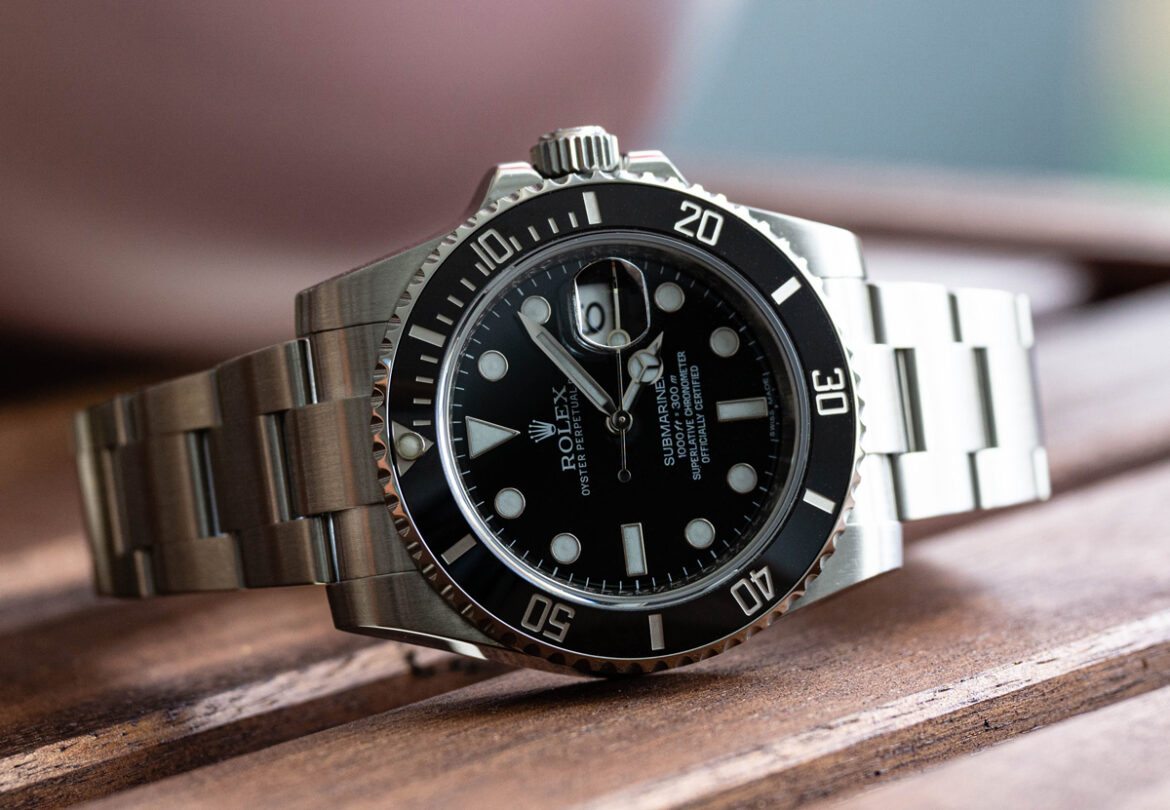Ask anybody to name the most famous make of watch, and nine times out of ten, they’ll answer: Rolex (submariner). Rolex is not just a brand, it’s a tradition that dates back for more than a century. It’s a guarantee of excellence, of versatility, of that inimitable combination of form and function. No other watchmaker is as firmly linked with the ideals of innovation and of pushing the limits of what can be done. From exploration to sport, from cultural icons to scientific pioneers, Rolex has been the trusted timepiece of the people who have changed our world.
But how did this happen? Well, it started with a lot of hard work, a big idea and a great name…
Rolex Begins: London, 1905
The first Rolex watch was the brainchild of Hans Wilsdorf, a German who learned the trade in Switzerland. He moved to London in 1905, where he decided that the time had come to go into business for himself. Together with Alfred Davis, he created Wilsdorf & Davis, which had the goal of making timepieces that were affordable and which performed flawlessly. While watches were scarcely uncommon, they were notoriously unreliable and Wilsdorf wanted to create incredibly precise timepieces with parts imported from Switzerland.
In 1908, Wilsdorf knew it was time to establish a brand. He settled on the name “Rolex.” Why? It was short enough to fit onto the face of a watch, it was easy to pronounce in any language and easy to remember, and it does have that sound of a watch being wound.
Rolex Takes The Plunge: The British Channel, 1927
Having relocated to Geneva from London in 1919, the Rolex team set their sights on overcoming the next major obstacle. They had conquered accuracy, but now they wanted to create a watch that was waterproof and impervious to sand. Their first waterproof, dustproof watch was called the Oyster, and its hermetically sealed case meant that it could keep ticking despite the elements.
Although Oyster launched in 1926, it really took off in 1927 when English swimmer Mercedes Gleitze swam across the Channel. It took her ten hours, and she had a Rolex Oyster firmly fastened to her necklace. Gleitze became the first brand ambassador for Rolex, and they were canny enough to take out a page in the Daily Mail promoting the Oyster watch.
Rolex Goes To New Heights, 1933
Waterproof and dustproof, Rolex watches were making a name for themselves as the go-to choice for anyone facing adverse conditions. They also patented the very first self-winding mechanism in 1931 with the Perpetual Rotor. And as mankind took new steps into the great unknown, Rolex was there with them.
In 1933, the first plane flew over Mount Everest and the crew members were all wearing their trusty Rolex Oysters. But it wasn’t just about going to ever greater heights. We were all pushing the limits of speed, and Sir Malcolm Campbell wrote about wearing his Rolex watch when he set his land speed record of more than 300 miles per hour on 4 September 1935.
Rolex Keeps Pushing The Limits, 1953
Records were made to be broken, and the perfect watch can always be refined. Just as our greatest explorers and sportsmen kept pushing their limits, Rolex kept finding new ways to improve their designs and pit them against the elements. During the early 1950s, they pushed past earlier innovations (such as their first watch with a self-winding date display) to make professional watches for the great explorers.
When Sir Edmund Hillary and Tenzing Norgay and their team climbed Mount Everest in 1953, they were wearing their Rolex Oyster Perpetuals. In that same year, Rolex launched The Submariner, which was the first watch to be waterproof to up to 100 feet. They also developed their Oyster Perpetual to assist the first trans-Atlantic pilots.
Rolex was also there for trailblazers in the world of science, as scientists at CERN noted that Rolex’s Milgauss watch could hold up to 1,000 gausses in a magnetic field. In 1960, the Rolex Deep Sea Special was attached to the outside of the hull of The Trieste, which went into the Mariana Trench to a depth of 37,800 feet.
Rolex Combines Sport And Culture, 1960
Of course, Rolex has always been about more than pure function. Following their relationship with Sir Malcolm Campbell, Rolex has always had an association with the record-breakers at Daytona and they launched their Cosmograph Daytona for speedsters in 1963. The Daytona would gain even greater popularity years later when the great Paul Newman developed a fondness for them, bringing Rolex fandom to a much broader audience. You can find certified Rolex Daytona Watches online at Chronext and learn much more about their incredible history.
Rolex Keeps Striding Forward, 1970-Today
Throughout the decades, Rolex has been synonymous with innovation. There was the Sea Dweller in 1978, the Yacht-Master in 1992, and further strides forward in everything from their metal to their springs. And when James Cameron dove to the deepest place on earth in 2012, he went with the same make of watch as the crew of the Trieste: a Rolex. In the years and decades to come, you can rest assured that Rolex will be with our trailblazers every step of the way.

